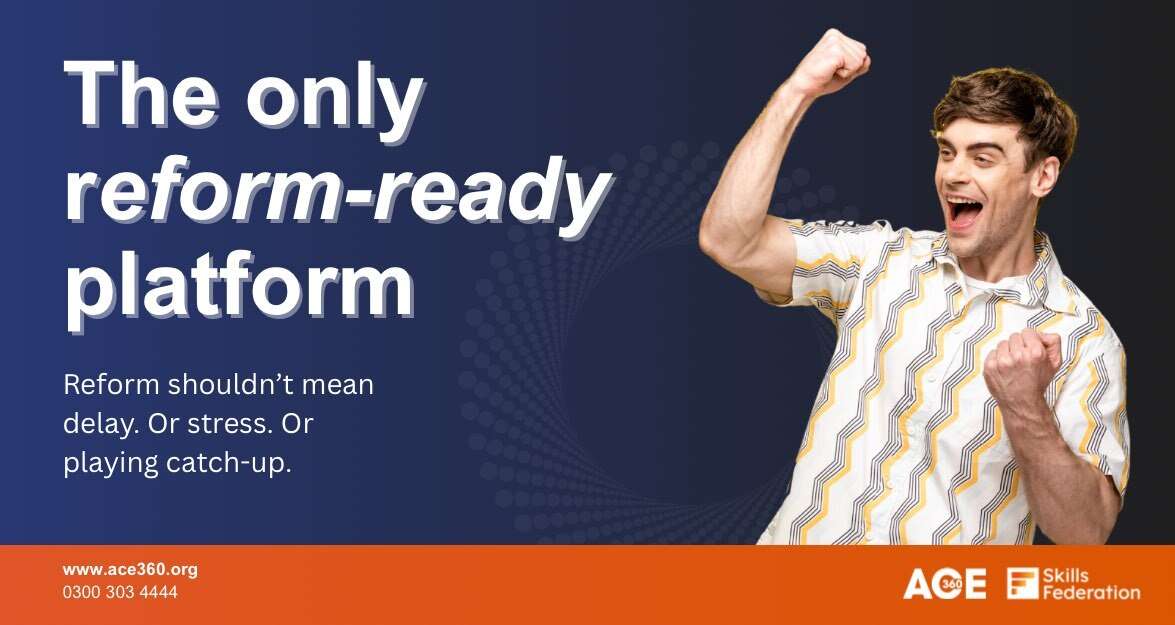What Is Quality In Apprenticeships?
Hello readers, welcome back to the ACE360 blog! In today’s piece, we are taking a closer look at what quality in Apprenticeships means – in particular how it was defined, how it is defined now and our best practice tips to ensure quality in apprenticeships for your own training or assessment organisation!
According to www.dictionary.com, quality is defined as ‘producing or providing products or services of high quality or merit’.
This begs the question – how can employers, Training Providers and End Point Assessment Organisations ensure quality in Apprenticeships given the transition from Frameworks to Standards?
Quality In Frameworks & Apprenticeship Standards
Prior to Apprenticeship Standards, we had Apprenticeship Frameworks.
And it’s important to distinguish the difference, as without doing so you could be barking up the wrong tree as there are subtle but important differences.
Let’s take a look…
Both Frameworks and Standards refer to training programmes for different types of Apprenticeships. However, both have differing approaches when ensuring quality.
For example, Apprenticeship Frameworks put emphasis on assessment throughout programme, whereas Apprenticeship Standards have a separate End Point Assessment up to three months following programme and is assessed externally by an independent Assessor.
This therefore puts emphasis towards the end of the programme and requires learners to learn and retain knowledge ahead of it as opposed to learning and demonstrating knowledge in bite-sized chunks.
How Standards Make Quality in Apprenticeships Central
So, what was wrong with Apprenticeship Frameworks? Well, Frameworks put particular emphasis on achieving a competency-based qualification (such as BTEC or NVQ) instead of putting emphasis on picking up the required skills to carry out a job within an organisation.
Examining the quality aspect of Apprenticeships, the Government launched Standards to rectify this after recognising that a competency-based qualification does not necessarily equate to the practical know-how to perform a role from the get-go.
For example, Frameworks individually examines learners on components throughout the course, meaning that learners can tick parts of the course off one by one, often forgetting the content of previous modules and how it applies to the ‘bigger picture’.
So, how do Standards make quality in Apprenticeships central? Well, Standards seek to determine quality of delivery by placing ability to demonstrate knowledge of the overall programme content first, with the hopes of alleviating further requirements to train learners later down the line in employment by allowing them to pick up more skills throughout the process.
It is said that this is because Standards better meet the needs of employers.
It’s not surprising to see why either, as the creation of Apprenticeship Standards are led by industry-leading employers and experts within the Apprenticeships field.
These key stakeholders ensure that Standards are occupation-focused and not qualification-led.
Responding To The Needs Of Employers As A Way Of Delivering Quality In Apprenticeships
Now that we have established that the needs of employers are central to the newly defined objectives of Apprenticeships Standards, let’s take a look at exactly what quality means in this context.
With skills gaps, gender disparities and general societal inequality when it comes to access to certain careers, the mission of Apprenticeship Standards is an important one.
Let’s take a look at the benefits of Apprenticeship Standards that determine success within the field:
– Employers are the most informed groups to determine what skills should be learned through vocational study like Apprenticeships, so naturally this partnership makes sense.
– Reduce time and costs associated with additional training requirements once employment commences.
– Boost employability of Apprentices.
– Help close skills gaps within businesses, such as; data, tech and digital skills!
– Higher staff morale as workload is eased by skilled and best-fit Apprentice employees.
– The earn while you learn aspects helps make Apprenticeships even more accessible to young learners from disadvantaged backgrounds, indeed older learners too who have to balance family responsibilities!
How To Ensure Success When Delivering & Assessing Apprenticeship Standards?
As the industry collectively transitions from Apprenticeship Frameworks to Apprenticeship Standards, there has never been such a need for the cost-effective and reliable apprenticeship solution that ACE360 provides.
In essence, ACE360 acts as a standardised platform for training providers, employers and end point assessment Organsiations when handling apprenticeship records in a centralised and GDPR compliant way, with the added benefit of also offering reporting and analytical functionality which makes compliant end point assessment a breeze whilst enhancing communication between your partner organisations.
Sign up to a free to attend ACE360 webinar to learn more before setting up your free account…
For Employer / Training Provider webinars, click here!
For End Point Assessment Organisation webinars, click here!





